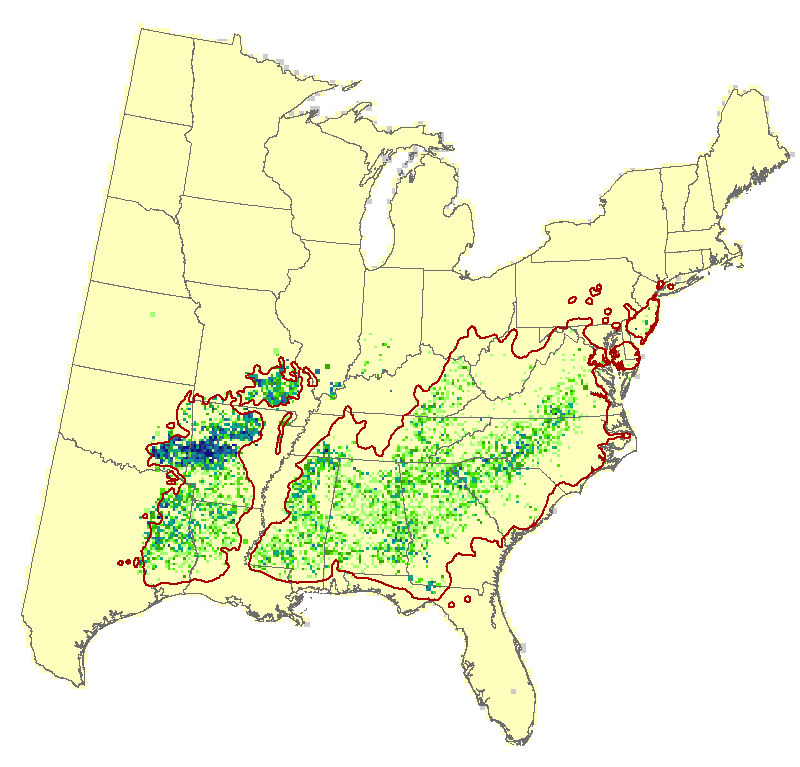shortleaf pine (Pinus echinata)
Model Reliability: High
| GCM SCENARIO | % Area Occ | Ave IV | Sum IV | Future/Current IV |
|---|---|---|---|---|
| Actual | 14.1 | 7.9 | 32601 | N/A |
| RFimp | 19.8 | 5.2 | 29954 | 0.92 |
| CCSM45 | 35 | 6.3 | 65285 | 2.18 |
| CCSM85 | 44.8 | 7.4 | 97718 | 3.26 |
| GFDL45 | 42.1 | 7.4 | 90952 | 3.04 |
| GFDL85 | 55.5 | 7.3 | 118829 | 3.97 |
| HAD45 | 46.8 | 7.3 | 100815 | 3.37 |
| HAD85 | 57.3 | 7.3 | 122533 | 4.09 |
| GCM45 | 47.1 | 6.2 | 85684 | 2.86 |
| GCM85 | 58.7 | 6.6 | 113028 | 3.77 |
Regional Summary Tree Tables
Summaries for tree species are available for a variety of geographies, in both PDF and Excel format. These summaries are based on Version 4 of the Climate Change Tree Atlas
Interpretation Guide
Shortleaf pine is a widely distributed (10.5% of area), abundant southern species and our models show a substantial increase in suitable habitat plus moderate adaptability such that we class it as very good capability to cope with a changing climate, and even better under RCP 8.5. SHIFT also classes it as an excellent infill species, but the SHIFT model does not show potentials for the species to move into New England naturally within 100 years, despite suitable habitat appearing there according to RCP 8.5.
Family: Pinaceae
Guild: pioneer, dry-site intolerant
Functional Lifeform: large evergreen conifer
| 3.6 | 0.00 |
| -0.97 |  |
MODFACs
What traits will impact shortleaf pine's ability to adapt to climate change, and in what way?:
Primary Positive Traits
Environment habitat specificity
Primary Negative Traits
Shade tolerance Insect pests Drought



